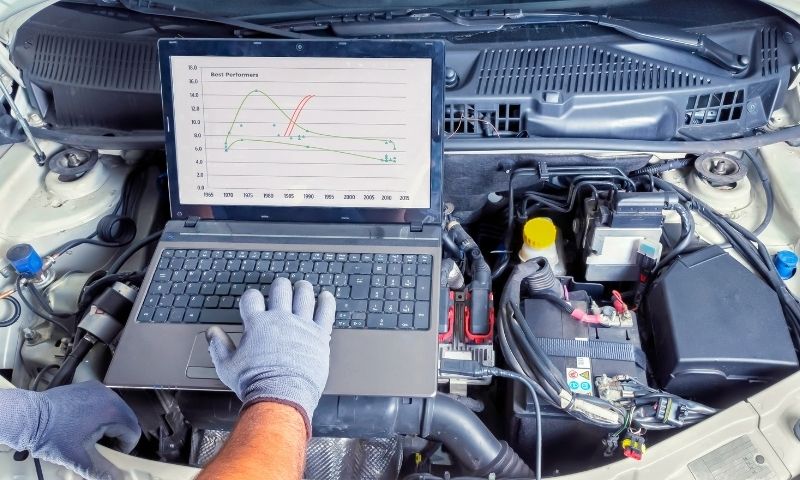A Leading Resource Built By Automotive Lovers, For Automotive Lovers.
We’ve helped consumers around the world make their purchasing decisions.
Latest Articles
A jump starter can charge a car battery temporarily, but it is not for long-term charging. Prolonged use can damage the battery and shorten its lifespan. For routine maintenance and… A dry cell battery includes a zinc anode, a carbon cathode, and an electrolyte paste. The electrolyte, usually alkaline or ammonium chloride, enables chemical reactions. These reactions produce electricity. Different… Many factors can drain your cell battery. Apps running in the background and notifications use energy. High screen brightness raises power consumption. Adjusting phone settings, like using power-saving mode, and… If your battery won’t charge, check these things: Make sure the charging cable and power adapter are securely connected. Look inside the phone port for lint or dust. Try a… Charging your smartphone can drain the battery if the charger overheats. This can happen with direct sunlight or heat-retaining surfaces like blankets. To prevent this, close background apps and monitor… A cell is a single electrochemical unit that converts chemical energy into electrical energy. A battery is a collection of multiple cells connected together. Both devices perform energy conversion, but… A battery cell in a laptop usually means a lithium-ion cell, often the 18650 type. Each 18650 cell is cylindrical, with a diameter of 18mm and a height of 65mm…. Phone batteries can drain while charging for various reasons. Excessive app usage, enabled power-consuming features, outdated software, faulty batteries, or damaged charging ports may be to blame. Identifying these issues… The UM-1 cell battery, known as the D battery, is a standard alkaline battery with a voltage of 1.5V. It is commonly used in consumer electronics like remote controls and… If your Mac isn’t charging, first check the power source and connections. Ensure the charging cable and adapter are working. High temperatures can affect charging. Examine the battery health and… A turbo cell battery is a type of sealed lead-acid battery. It features lead-acid plates for high peak power and endurance. These batteries charge quickly and resist overcharging. They are… Battery reconditioning on a charger restores battery capacity. The process includes fully discharging the battery, which resets its internal meter, followed by a complete recharge. This method enhances battery efficiency… A single cell battery is a power source made of one electrochemical cell. It has two terminals: positive and negative. Multiple single cell batteries can connect in series to create… A prismatic battery cell is a rectangular cell made of stacked electrodes and separators. It was invented in the 1990s to improve manufacturing efficiency. Prismatic cells are larger than cylindrical… AGM stands for Absorbent Glass Mat. It is a separator in lead-acid batteries. AGM uses fine glass fibers to absorb battery acid, which improves performance and lifespan. These batteries are… A primary cell battery is a non-rechargeable device designed for single-use. It converts chemical energy into electrical energy through a chemical reaction. Common applications include remote controls and flashlights. Primary… To charge a car battery, use a fully automatic charger with 15, 20, or 30 amps. For maintenance, consider a trickle charger or a solar charger. These options provide effective… A pouch cell battery is a type of rechargeable lithium-ion battery. It features a flexible, lightweight, and compact design. These cells can fit different shapes and deliver high current. Pouch… Optimized Battery Charging is good for your iPhone. It improves battery lifespan by reducing wear and limiting charging time. When set to 100% Charge Limit, it helps maintain battery health… Battery charger prices vary widely. A Battery Tender JR charger costs $35.97 and provides 800mA. Car battery chargers typically range from $11 to $140. Popular options include smart chargers and… Flooded cell batteries, or wet cell batteries, are traditional batteries. They contain lead plates submerged in a liquid electrolyte. Users must regularly check the liquid level and add distilled water… AutoZone charges $15 to $25 for battery installation. If you buy the car battery from them, they may install it for free. AutoZone also offers free battery services like testing… A dry cell car battery uses paste electrolytes that provide solid electrical conductivity while preventing leakage. Unlike wet cell batteries, which use liquid electrolytes and need to be upright and… A dry cell battery is used mainly in portable devices like flashlights, remote controls, and toys. It contains a paste-like electrolyte, which minimizes leakage. Dry cells are preferred over wet… A fully charged car battery measures 12.6 volts with the engine off, known as the “resting voltage.” When the engine is running, the voltage rises to 13.5 to 14.5 volts…. Charge your Power Wheels battery for at least 18 hours with the included 12-volt charger before first use. For every following use, charge for at least 14 hours. Do not… To charge a car battery, the idle time depends on usage. If the car sits idle for a long time, it needs about 20 minutes of idling to charge the… A lead-acid motorcycle battery usually needs 6 to 24 hours to fully charge. The charging process is non-linear. It takes about 5 to 8 hours to charge the first 70%…. A dead cell in a car battery is a failure in one of its internal cells. This happens when the internal connection breaks, causing battery failure. A dead cell usually… A dead cell in a battery is a failure in the connection within one or more cells. This break stops the battery from producing more than 10.5 volts. Dead cells…Jump Starters: Can They Charge a Dead Battery? Portable Solutions Explained
What Is Inside a Dry Cell Battery? Parts, Working Principle, and Advantages Explained
What is Draining My Cell Battery? Causes, Tips, and Fixes for Fast Drain
Why Won’t My Battery Charge? 10 Common Reasons and Solutions for Your Device
Why Is My Charger Draining My Battery? Troubleshooting Common Causes and Solutions
Cell vs. Battery: Understanding the Key Differences and Distinctions Explained
What Is a Battery Cell in a Laptop? Types, Lifespan, and Performance Explained
Why Is My Battery Draining While Charging? Causes, FIXES, and What to Do
UM-1 Cell Battery: What It Is, Its 1.5V Power, Uses, and Replacement Options
Why Is Battery Not Charging on Mac? Quick Fixes and Troubleshooting Solutions
Turbo Cell Battery: What It Is, Benefits, and Rechargeable Features Explained
What is Battery Reconditioning on Charger? Effectiveness, Methods, and Benefits Explained
Single Cell Battery: Definition, Types, Properties, and Comparison with Dual-Cell
Prismatic Battery Cells: Types, Advantages, Applications, and Key Differences
AGM on a Battery Charger: Definition, Importance, and Charging Methods Explained
What is a Primary Cell Battery? Overview, Key Facts, and Differences Explained
What Amp to Charge Car Battery: A Step-by-Step Guide for Effective Charging
Pouch Cell Battery: What It Is, Advantages, Applications, and Design Evolution
Is Optimized Battery Charging Good? Benefits for Battery Lifespan and User Experiences
How Much Is a Battery Charger? Explore Car and Portable Options for Every Need
What Is a Flooded Cell Battery? Key Differences, Types, and Benefits Explained
AutoZone Battery Installation: How Much Does It Cost and What Services Are Offered?
Dry Cell Car Battery: Key Differences, Advantages, and Comparison Guide
Dry Cell Battery: Uses, Key Applications, and Comparisons with Wet Cells
How Many Volts is a Fully Charged Car Battery? Essential Insights on Voltage and Charging
Power Wheels Battery Charging: How Long to Charge, Tips for Safety and Maintenance
How Long to Idle Car to Charge Battery: Effective Duration for Full Recharge
How Long to Charge a Motorcycle Battery: Quick Tips for Fast Recharges
What is a Dead Cell in a Car Battery? Symptoms, Causes, and Fixing Tips
What is a Dead Cell in a Battery? Symptoms, Causes, and Troubleshooting Tips



